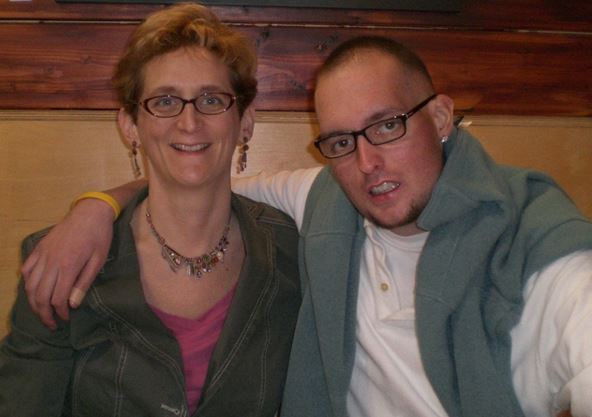The bad news: germs lurk throughout hospitals, which can lead to serious, potentially fatal, infections.
The good news: you can reduce your risk of hospital infections.
When I use the term “hospital infections,” I’m referring to the broader category of “healthcare-associated infections.”
What is a healthcare-associated infection?
Healthcare-associated infections (HAIs) are infections developed while people receive care in a healthcare facility, including hospitals, surgical centers, doctors’ offices/clinics, and long-term care facilities.
How can you get a HAI?
Infections develop when germs enter your body through your eyes, nose, mouth, genitals, and/or open wounds.
You can be exposed to germs—
- in the air (airborne).
- by touching a contaminated surface.
- through contact with contaminated medical instruments.
- from others touching you without properly cleaning their hands after they have touched contaminated surfaces or sick patients.
Importantly, C diff. and MRSA are common, dangerous, and can live on surfaces for days, easily transferring back and forth between people, equipment, and other surfaces.
What types of infections can patients develop?
Common healthcare-associated infections include:
- Urinary tract infections.
- Surgical site infections.
- Pneumonia.
- Bloodstream infections.
How serious and common are hospital infections?
The US Centers for Disease Control and Prevention (CDC) reports that HAIs account for an estimated 1.7 million infections and 99,000 associated deaths each year.
And if an HAI doesn’t kill you, you might experience a fever, shortness of breath, a headache, and other symptoms.
Plus, infections can increase your time in the hospital, lead to a return trip to the hospital, and impede your recovery.
What increases your risk for HAIs?
 Any patient in any healthcare facility can develop an HAI. But young children, the elderly, and those with compromised immune systems have a greater risk.
Any patient in any healthcare facility can develop an HAI. But young children, the elderly, and those with compromised immune systems have a greater risk.
Additionally, the risk increases with—
- long hospital stays.
- healthcare workers who fail to wash their hands.
- overuse of antibiotics.
Finally, some medical procedures increase the risk of HAIs:
- Surgery.
- The use of:
- Urinary catheters.
- Central lines inserted into patients’ veins.
- Ventilators.
- Implants and prostheses.
How can you protect yourself if you must go to the hospital?
The following suggestions can help you reduce your risk of HAIs. (Although these suggestions focus on hospitals, many of the tips apply to nursing homes as well.)
Handwashing is vital!
Experts say proper hand hygiene is the single most important factor to prevent HAIs. Ensure that all medical personnel and visitors wash their hands before touching the patient, a medical instrument, or any surface the patient may touch. Patients should wash their hands frequently as well.
For more information, read Handwashing in Healthcare Could Save Your Life!
Before you go to the hospital…
Ask your doctor what steps his/her hospital takes to reduce the risk of HAIs.
Evaluate hospitals in your area using Medicare’s Care Compare site and The Leapfrog Group’s website. But take the information with a grain of salt – it’s not a guarantee.
For more information, read How to Choose a Hospital
While at the hospital…
Follow these suggestions from Consumer Reports:
- Ask about MRSA testing.
- Insist on room cleanliness.
- Bring bleach-based wipes—regularly clean anything you touch, including the bed rails and TV remote.
- Follow strict hand hygiene guidelines.
- If prescribed antibiotics, ask if they are needed.
- If prescribed heartburn drugs, ask if they are needed. These medications reduce stomach acid and increase the risk of C diff. If you must take them, ask for the lowest dose possible.
- Every day, ask staff if they can remove catheters, ventilators, and any other tubes. The longer these devices are in place, the higher the risk of infection.
- If your hair must be removed, ask the staff to use an electric hair remover. Razors can nick the skin, providing an opening for an infection.
Additionally, ask if nasal cleaning and bathing with antimicrobial solutions could reduce your risk of HAIs, and brush your teeth twice a day.
Before discharge, ask your doctor how to protect yourself from infections at home, what signs of infection to watch for, and what to do if you see signs.
For more information, read Tips for Hospital Discharges.
After a hospital stay…
At home, consider the following:
- Be wary—assume you may develop an infection.
- Watch for warning signs, including fever, diarrhea, worsening pain, or an incision site that becomes warm, red, and swollen.
- Clean frequently touched surfaces with a solution of 1 part bleach to 10 parts water.
- If possible, use a bathroom that no one else uses.
- Don’t share toiletries or towels.

Roberta Carson started the nonprofit Zaggo to help others manage illnesses and injuries after caring for her teenage son with terminal brain cancer. The ZaggoCare System’s tips and tools help patients get the best possible care by teaching users how to be engaged, effective members of their medical teams.








